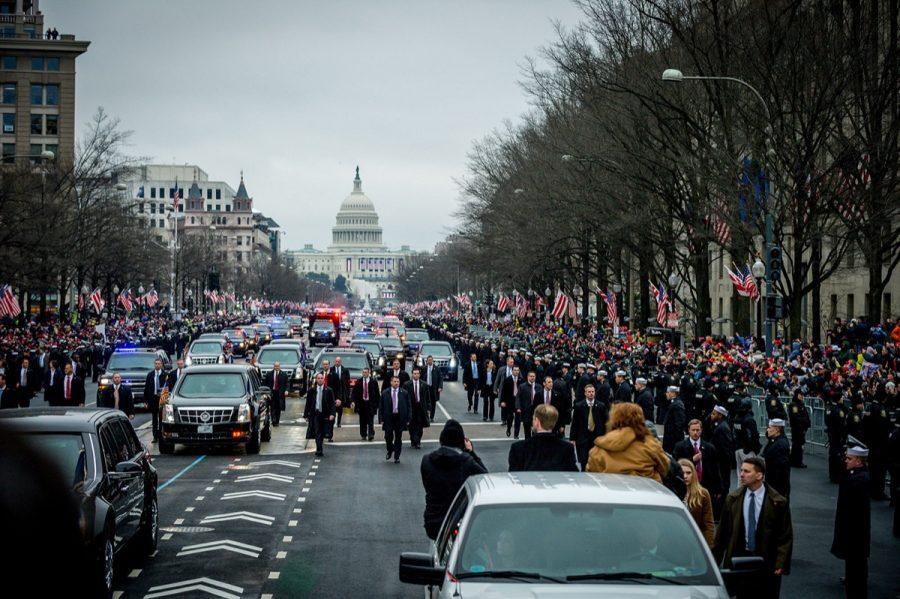Inauguration 2017
The Trump administration ushers in a new era in American history
The ceremony ushering in a new President has always held an important place in the history of American elections. This year’s inauguration was no different; newly-elected President Donald J. Trump was sworn in on Friday, January 20th, while a crowd of hundreds of thousands looked on. The ceremony was opened with a speech by Missouri Senator Roy Blunt. In this oration, he reminded listeners that the inauguration was a national celebration, “but not a celebration of victory — a celebration of democracy.”
The theme of celebrating this country’s unique style of freedom and democracy continued to reappear throughout the day. After taking the oath, administered by Chief Justice John Roberts, Trump took the podium to deliver his inaugural address. His speech was notable in much the same way Trump’ campaign was notable: in how it deviated from precedent. While most freshly-minted Presidents use the inauguration to deliver unifying platitudes and begin gaining momentum for various ambitious policies during their first hundred days, Trump focused his speech mostly on lambasting the sorry state of America, painting a dark picture of “American carnage”: urban areas wracked by crime and communities ruined by jobs fleeing overseas. He framed his inauguration as a fundamental change in American politics – rather than a simple transition of power between political parties, he billed his ascension to the Presidency as a day when power was handed from political elites back to the American people.
While his message was received positively by supporters, he was criticized widely for what some perceived to be the hypocrisy of standing on a stage packed with wealthy elites while claiming to be a man of the people. Senator and former Presidential candidate Bernie Sanders said “I find it somewhat amusing that you’re attacking the establishment when the establishment is sitting right behind you” noting that most of Trump’s guests were “billionaire after billionaire after billionaire, some of the most powerful people in this country, who over the last 10, 20 years have become much, much richer while the middle class has shrunk.” As of this writing, Trump has not responded to Sanders’ remarks.
One of the biggest stories of the inauguration actually came a day later, on the 21st, when millions of protesters around the world took to the streets. The Women’s March on Washington, along with many supporting protests around the world, took over most major American cities throughout the country. The protests were especially remarkable in their size: according to Marcel Altenburg and Keith Still, crowd scientists at Manchester Metropolitan University in Britain, about 160,000 people attended the inauguration, while the March on Washington had around 670,000 supporters, almost triple the amount the previous day, in the streets. This skew in attendance was further exacerbated when the many protests around the country are included; conservative estimates place the sum of the crowds at well over a million people.
Trump was clearly hurt by the dismal attendance at his inauguration, not only when compared to the Women’s March, but also when compared to previous inaugurations. On Saturday, Trump claimed that, from his podium, he could tell there were “a million, a million and a half people” and that onlookers were packed “all the way back to the Washington Monument”. His press secretary went on to claim that Friday’s celebration was “the largest audience to ever witness an inauguration”, despite the fact that Trump’s administration has no way to back that assertion up.
Trump’s initial theme – Unique America – was somewhat overshadowed this weekend by the enormous protests in opposition to his new administration. Despite the massive protests, Trump and the GOP have not wasted any time getting to work, using legislative and executive action to roll back Obamacare and other liberal programs. Regardless of one’s position on the new President, now that Trump’s transition into office is nearly complete it is time for everyone to get to work; in this unique, democratic society it is imperative that everyone is willing to use their Constitutional rights to protest, organize, and speak out against what is wrong in order that this unique, American system survives and thrives.









